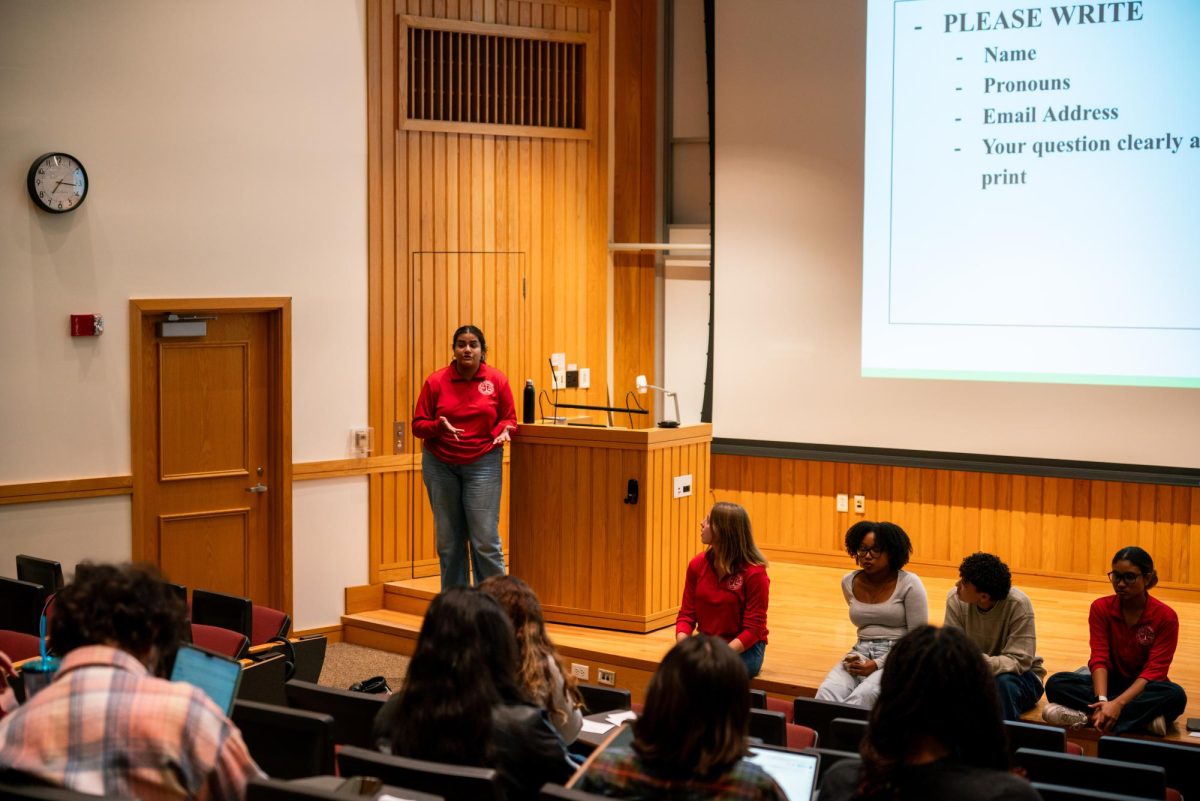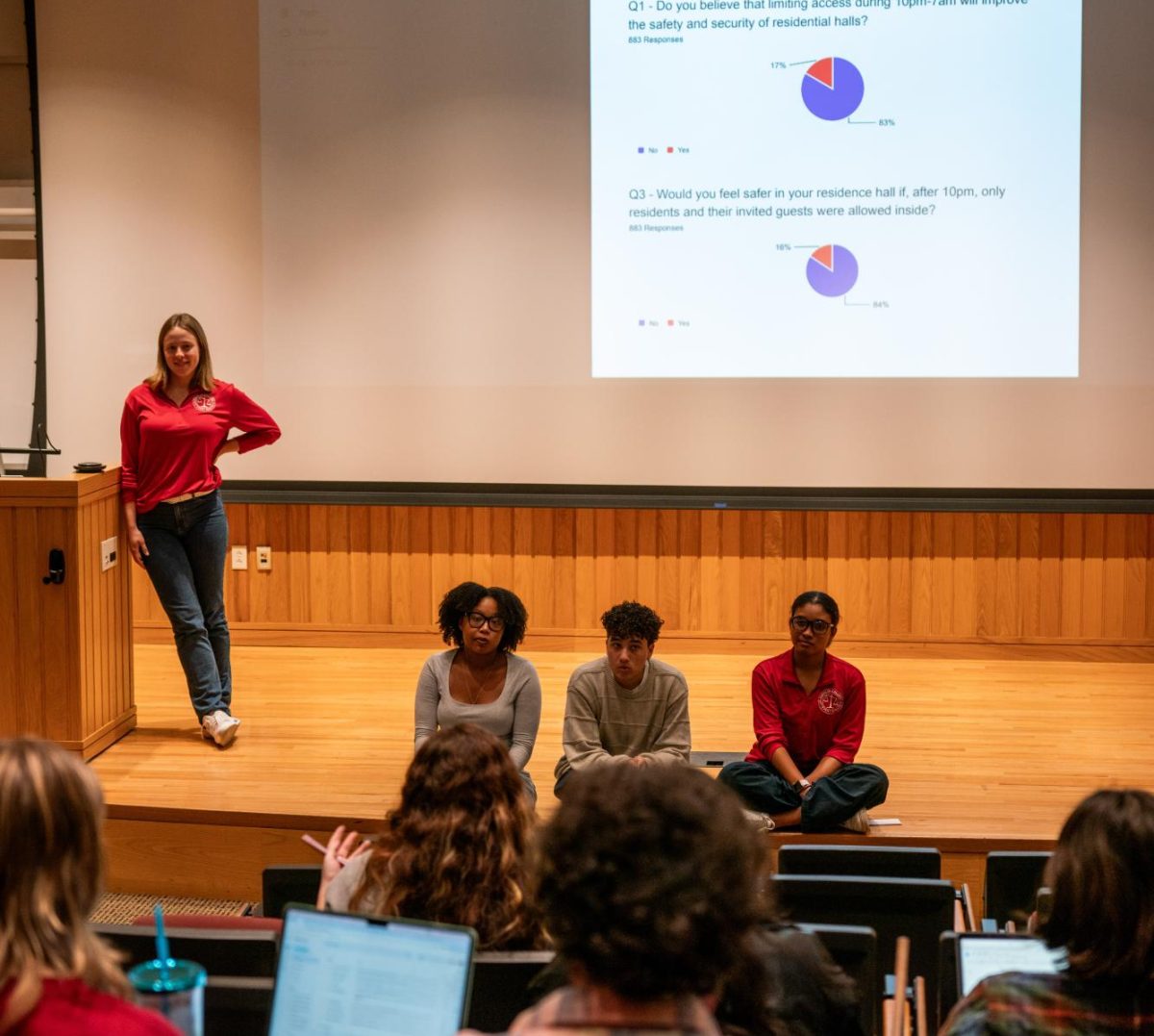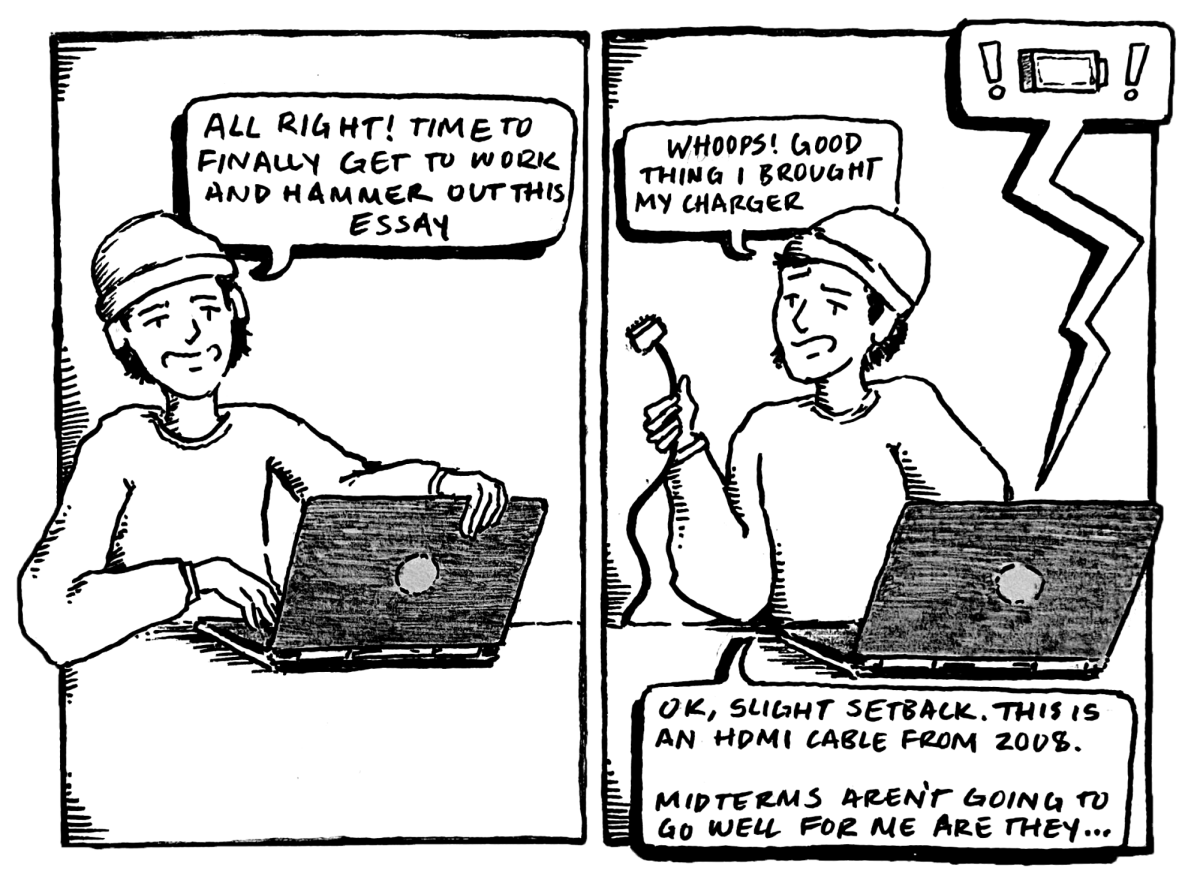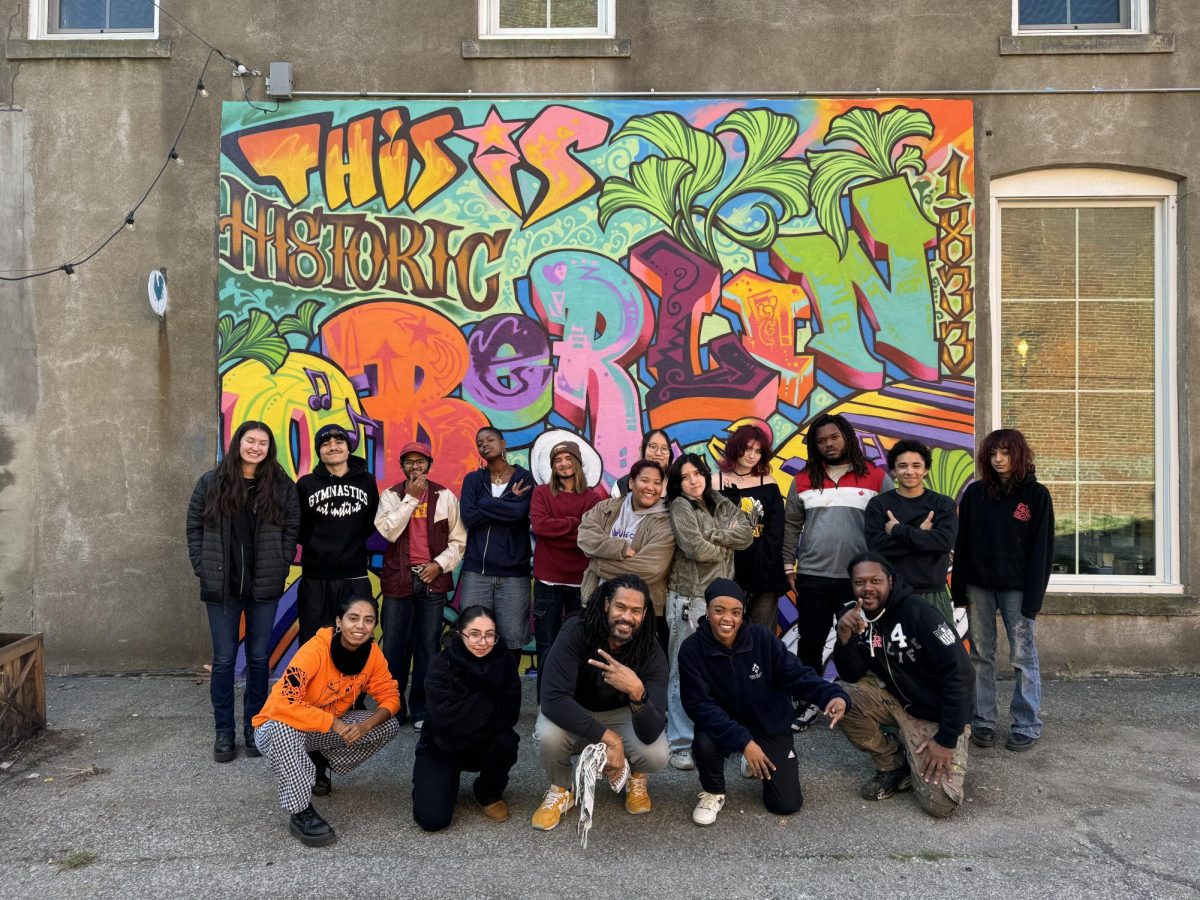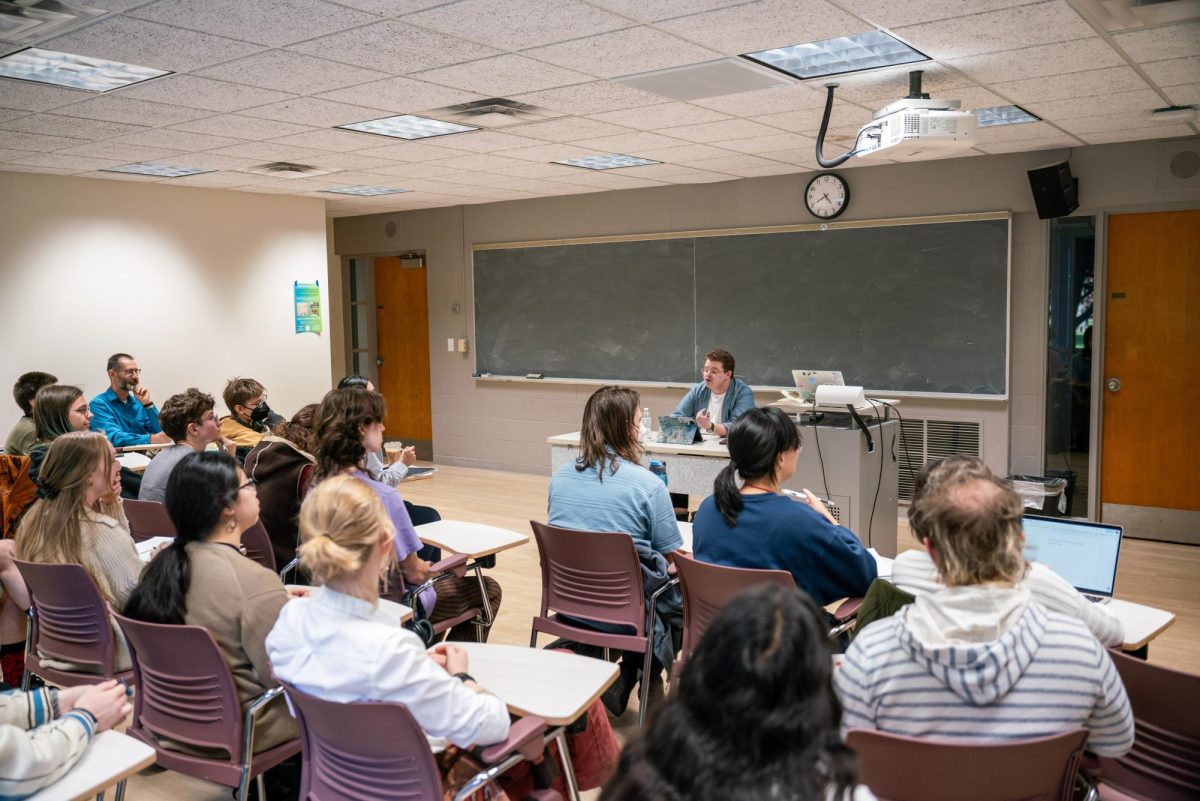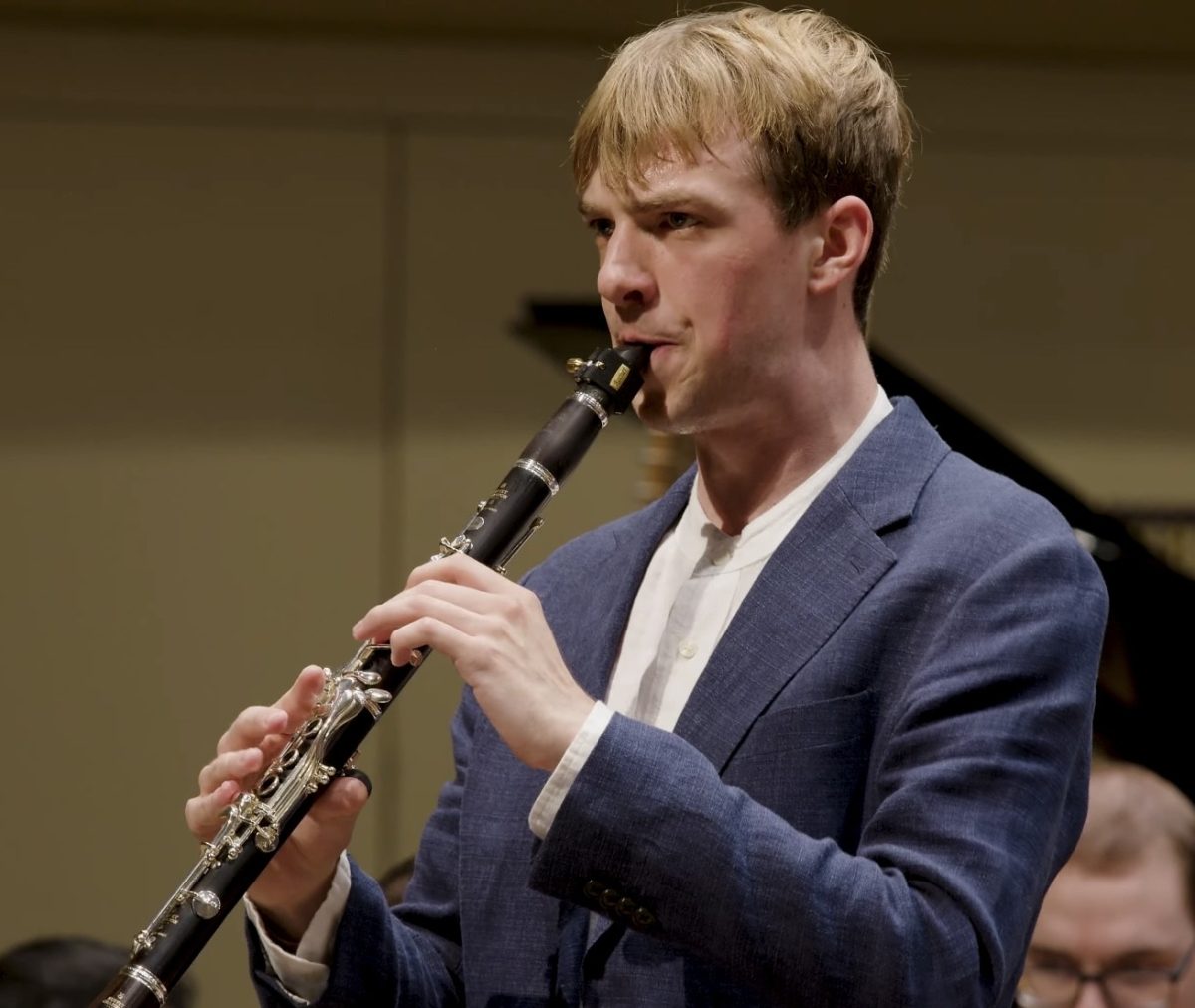Green Energy Forum
December 4, 2009
When College President Marvin Krislov signed off on Oberlin College’s Climate Action Plan this fall, he committed the school to achieving carbon emission neutrality by the year 2025. Although the plan is technically unofficial and nonbinding, on Wednesday, faculty and commu- nity members engaged in a green energy forum to talk about how to make it happen.
Students filled West Lecture Hall to listen to a panel composed of environmental studies professors, a former Oberlin City Council member, Oberlin’s director of facilities planning and construction, and the manager of the Lorain County landfill discuss Oberlin’s unprecedented goal.
First to speak was Rumi Shammin, assistant professor of environmental studies. He outlined what he said were the most crucial reasons to work toward environmental sustainability. First, Oberlin relies heavily on nonrenewable fossil fuels for power — resources that will eventually run out. Second, the negative impacts of environmental irresponsibility include climate change and air and water pollution. Finally, Shammin argued, unchecked consumption has an adverse social impact, causing the community to lose its sense of place.
“We’ve organized our society in a way that is not sustainable,” said Shammin. He closed by urging the Oberlin community to re-evaluate its power sources in all stages of development — generation, distribution and usage.
Next to speak was John Petersen, associate professor and director of the environmental studies program. Petersen presented a list of 10 suggestions for students interested in enacting change within Oberlin. Many of these tips involved understanding the issue on a local level, such as his suggestion that students learn more about the history of coal use at Oberlin and acquaint themselves with the process by which major decisions are made within the faculty.
Petersen emphasized that proposals and suggestions to the school would be better received
if they were framed in the context of the students’ education. He also recommended that students demonstrate their commitment to their cause by making personal sacrifices in the name of sustainability.
In his advice, Petersen encouraged activists to be less aggressive and focus more on the positive aspects of their cause. “Emphasize initiatives that position Oberlin as an innovator and a leader,” urged Petersen. “Celebrate all success … understand the importance of good press.”
Other panelists supported student activism as well. Assistant Professor of Economics and Environmental Studies Jordan Suter encouraged students to stay active in pushing climate legislation. “Oberlin is not a standard household,” he said. “Our alumni donate funds to Oberlin, knowing the College does great things with them.”
Petersen was followed by David Sonner, former Oberlin mayor and City Council member. Sonner was very optimistic about Oberlin’s environmental future and stated that he believed Oberlin could be entirely energy self-sufficient within the next three to five years. “Oberlin is on its way to being a model for the rest of the world,” Sonner told the assembled students. “You will be glad you had a part in it.”
The panel then heard from Steven Varelmann, director of facilities planning and construction at Oberlin. In recent years, Varelmann has worked to make Oberlin construction projects — most recently the renovation of Burton Hall and Lord/Saunders — as eco-friendly as possible. He talked about energy-efficient changes he has made within the dorms, including a conversion to LED lights and the replacement of many windows on campus. He also explained the importance of finding green solutions independently rather than relying on conventional standards such as the Leadership in Energy and Environmental Design rating system.
“We can meet LEED criteria, but I don’t always feel good about the choices that we’ve made,” Varelmann said.
The next speaker was Richard Kostelnick, a local hydro-geologist and division manager for Republic Services, Inc., which runs the Lorain County II Landfill. He told the audience about his work with the College and the city toward harnessing the gas emitted by the expanding landfill as a powerful, renewable source of energy, one that will increase as more trash is brought there. He mentioned plans to build windmills on the landfill, which, once active, could convert the abundant, untapped wind energy and use it to power the city of Oberlin more cheaply and efficiently.
Finally, the panel heard from Nathan Engstrom, Oberlin’s environmental sustainability coordinator. He talked briefly about his recent research on Oberlin’s carbon emissions, which led to the institution of Oberlin’s Climate Action Plan. This aims to reform the school’s energy supply and distribution.
During the panel, audience members signed a petition intended to hold Oberlin to its previously stated sustainability goals.
Oberlin currently has a contract with Oberlin Municipal Light and Power System in which about 41 percent of the electricity used on campus comes from renewable energy sources. In both the town and College, the popular goal is to eventually rely fully on cheaper, cleaner renewable resources, but transitioning to a new source of energy is an unavoidably lengthy and expensive process.
As the discussion drew to a close, panel members again urged the audience to remain vocal about environmental reforms. Sonner said that students, as well as faculty and members of the community, must “goad, annoy and encourage those who are moving Oberlin toward a carbon-neutral future.” Judging from the audience’s enthusiastic reaction, it looks as though the student body is in no danger of losing its vigilance.






